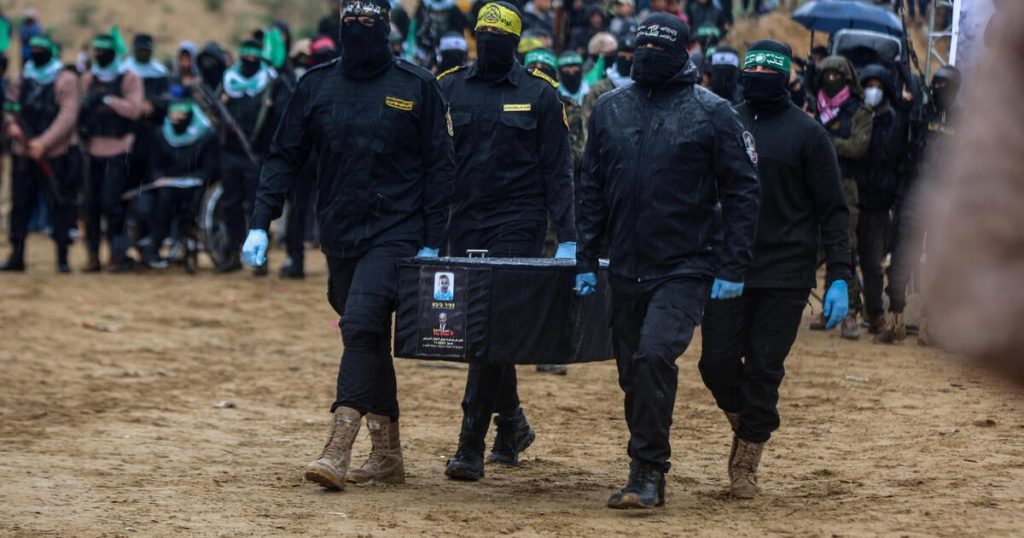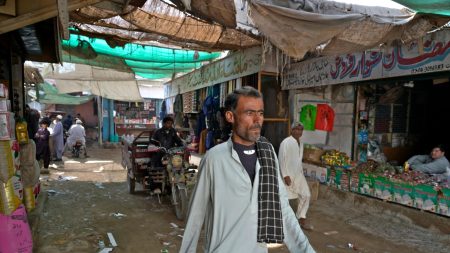The Emotional Return of Fallen Hostages: A Nation’s Agony
The release of four bodies by Hamas on February 20, 2025, marked a poignant and painful moment for Israel, as the nation grappled with the tragic end to the long ordeal of their beloved hostages. Among the remains were those of two young children, Ariel and Kfir Bibas, whose fate had weighed heavily on the nation’s heart since their abduction during the devastating Hamas attack on October 7, 2023. Their mother, Shiri Bibas, was initially thought to be among the returned, but this hope was shattered as the additional remains were later identified as those of another individual. This emotional rollercoaster underscored the cruelty of the situation, leaving a nation in mourning.
A Somber Ceremony in Gaza: A Glimpse into the Human Cost
In the Gaza Strip, the handover of the remains was conducted with a mix of solemnity and propaganda. Hamas militants displayed four black caskets, each adorned with images of the deceased, against a backdrop of anti-Israeli banners, including one that eerily depicted Prime Minister Benjamin Netanyahu as a vampire. Red Cross personnel, clad in their distinctive red vests, received the caskets with dignity, draping them in white sheets before transporting them to Israel. The contrast between the militants’ rhetoric and the respectful handling by the Red Cross highlighted the human aspect of the conflict, where even in war, there is a need for humanity.
Israel’s Collective Grief: A Nation United in Sorrow
In Israel, the news was met with profound sadness. Thousands gathered in Tel Aviv’s Hostage Square, a site that had previously been a place of hope and reunion, now transformed into a space for collective mourning. The crowd, including many masked Hamas fighters, shared moments of silence and reflection, united by their grief. The Israeli government, in a rare move, chose not to broadcast the handover, instead focusing on memories of the victims. Screens displayed cherished moments of the Bibas family, including the innocent laughter of baby Kfir and joyful family times, serving as a poignant reminder of the lives lost.
The Bibas Family: A Story of Hope and Loss
The Bibas family’s story is one of resilience and heartbreak. Shiri Bibas, along with her sons Ariel and Kfir, was taken from their home in Kibbutz Nir Oz during the October attack. Ariel, just four years old, and Kfir, a mere nine months, became symbols of the nation’s anguish. Their father, Yarden, though not present during the abduction, was later captured and released after 16 months. The family’s ordeal, marked by birthdays celebrated without the boys, became a rallying point for national solidarity. Supporters donned orange in tribute to the boys’ red hair, and a children’s song was penned in their honor, keeping their memory alive in the hearts of Israelis.
Oded Lifshitz: A Life Dedicated to Peace
Among the returned remains was Oded Lifshitz, an 83-year-old journalist and advocate for Palestinian rights. His abduction, along with his wife Yocheved, who was later freed, marked the end of a life dedicated to bridge-building between Israelis and Palestinians. The Lifshitz family, in their statement, expressed deep sorrow but also resolve, vowing to continue their healing process only when all hostages were home. Oded’s legacy, one of peace and understanding, stands as a beacon in the midst of conflict, reminding all of the human cost of war.
The Broader Conflict: A FragileCeasefire
The release of the remains comes amidst a fragile ceasefire, under which 24 living hostages have been returned, offering a glimmer of hope. However, the reality of those who did not survive lingers, casting a shadow over negotiations. Hamas’s refusal to release remaining captives without a lasting truce and Israeli withdrawal complicates the path to peace. The conflict has exacted a devastating toll: over 48,000 Palestinian casualties, widespread destruction in Gaza, and a deepening divide. The international community, particularly the U.S., faces criticism for policies that may derail peace efforts, leaving the region on a precipice, uncertain of what comes next. The story of these hostages is a microcosm of a broader tragedy, a poignant reminder of the human lives caught in the crossfire of politics and conflict.















